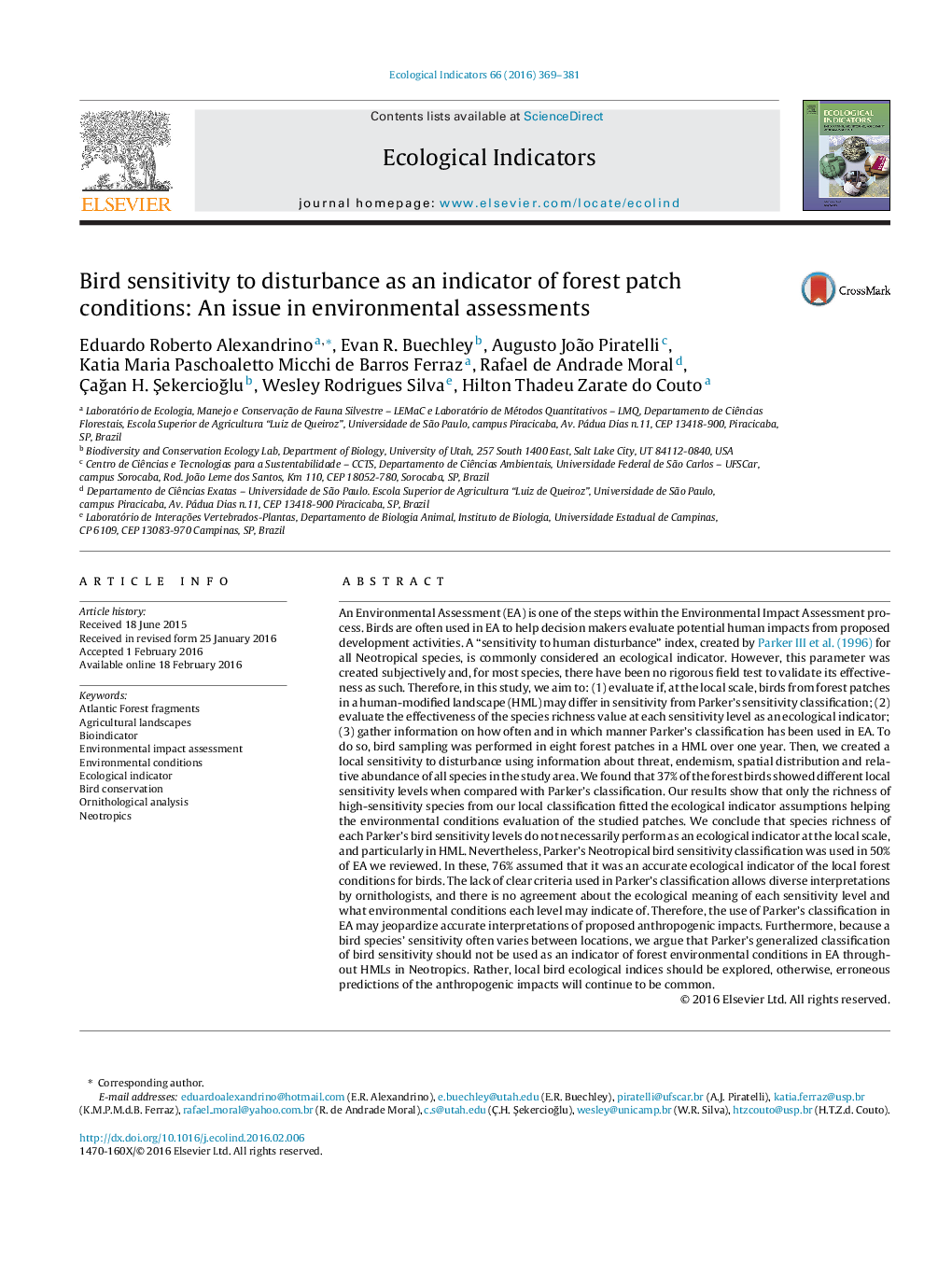| کد مقاله | کد نشریه | سال انتشار | مقاله انگلیسی | نسخه تمام متن |
|---|---|---|---|---|
| 6293488 | 1617136 | 2016 | 13 صفحه PDF | دانلود رایگان |
- Bird sensitivity to disturbance (Parker III et al., 1996) was tested as ecological indicator.
- Parker's classification failed to predict environmental conditions in patches in HML.
- Only high sensitivity species locally functioned well as an ecological indicator.
- Although flawed, Parker's classification was very used in environmental assessments.
- This is the first argument of how Parker's classification is wrongly used as ecological indicator.
An Environmental Assessment (EA) is one of the steps within the Environmental Impact Assessment process. Birds are often used in EA to help decision makers evaluate potential human impacts from proposed development activities. A “sensitivity to human disturbance” index, created by Parker III et al. (1996) for all Neotropical species, is commonly considered an ecological indicator. However, this parameter was created subjectively and, for most species, there have been no rigorous field test to validate its effectiveness as such. Therefore, in this study, we aim to: (1) evaluate if, at the local scale, birds from forest patches in a human-modified landscape (HML) may differ in sensitivity from Parker's sensitivity classification; (2) evaluate the effectiveness of the species richness value at each sensitivity level as an ecological indicator; (3) gather information on how often and in which manner Parker's classification has been used in EA. To do so, bird sampling was performed in eight forest patches in a HML over one year. Then, we created a local sensitivity to disturbance using information about threat, endemism, spatial distribution and relative abundance of all species in the study area. We found that 37% of the forest birds showed different local sensitivity levels when compared with Parker's classification. Our results show that only the richness of high-sensitivity species from our local classification fitted the ecological indicator assumptions helping the environmental conditions evaluation of the studied patches. We conclude that species richness of each Parker's bird sensitivity levels do not necessarily perform as an ecological indicator at the local scale, and particularly in HML. Nevertheless, Parker's Neotropical bird sensitivity classification was used in 50% of EA we reviewed. In these, 76% assumed that it was an accurate ecological indicator of the local forest conditions for birds. The lack of clear criteria used in Parker's classification allows diverse interpretations by ornithologists, and there is no agreement about the ecological meaning of each sensitivity level and what environmental conditions each level may indicate of. Therefore, the use of Parker's classification in EA may jeopardize accurate interpretations of proposed anthropogenic impacts. Furthermore, because a bird species' sensitivity often varies between locations, we argue that Parker's generalized classification of bird sensitivity should not be used as an indicator of forest environmental conditions in EA throughout HMLs in Neotropics. Rather, local bird ecological indices should be explored, otherwise, erroneous predictions of the anthropogenic impacts will continue to be common.
Journal: Ecological Indicators - Volume 66, July 2016, Pages 369-381
